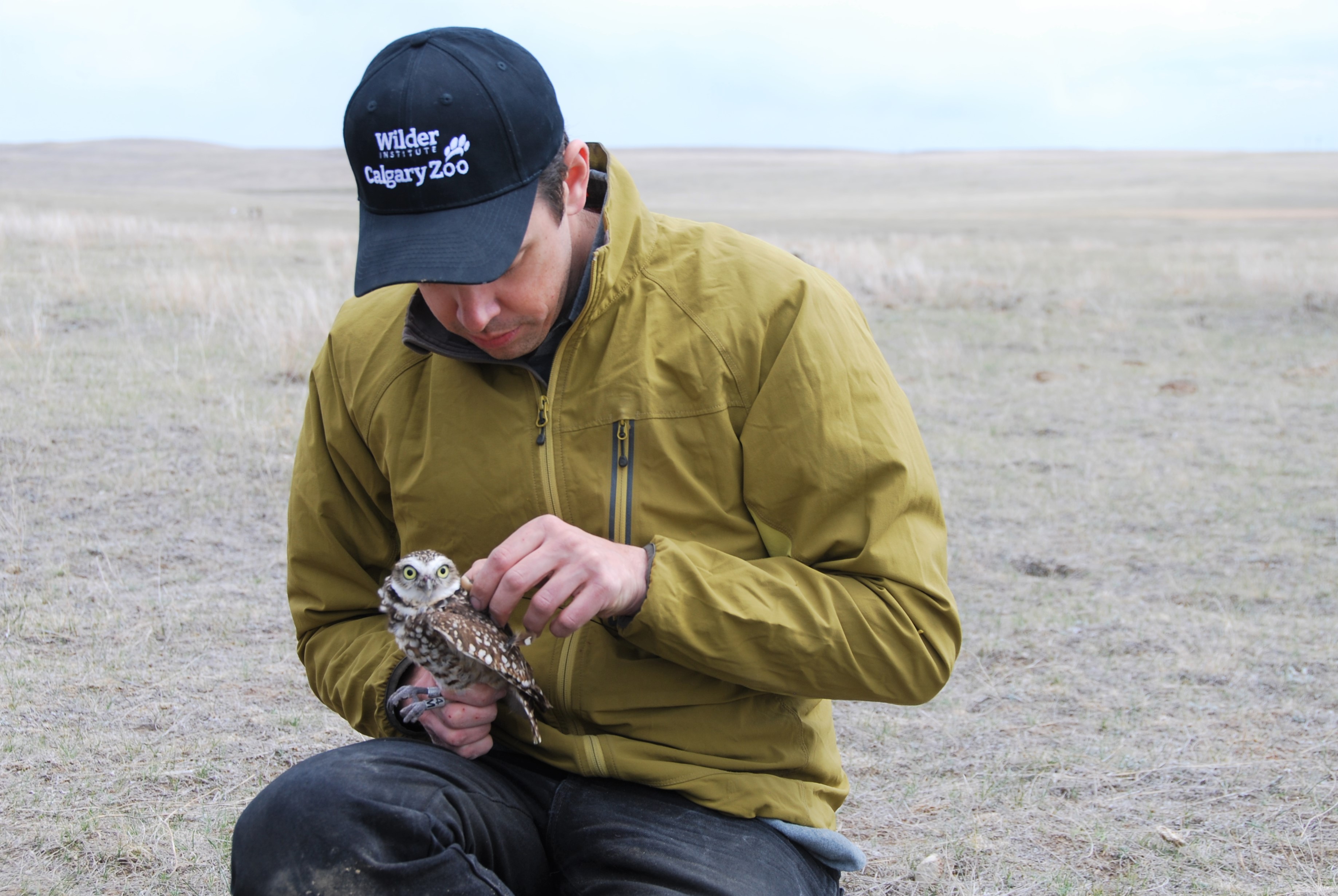The Wilder Institute/Calgary Zoo marked a major milestone this month in the preservation of the endangered burrowing owls species.
Earlier in May, the zoo released 10 breeding pairs of the birds back into the prairies. To date, more than 150 owlets have taken flight from the zoo’s head-started owl nests.
The zoo is collaborating on the species preservation program with the province and the federal government.
“There’s potentially as few as 300 to 500 pairs breeding in Prairie Canada in a given year,” said Graham Dixon-MacCallum, conservation research population ecologist with the Wilder Institute/Calgary Zoo.
“I think 20 owls is making a meaningful contribution,” he said.
The program is also currently assessing the viability of scaling up the zoo’s conservation efforts as a method of saving the species.
The loss of grassland in the prairies, climate change, and other environmental changes in Western Canada has led to a 90 per cent decline in the total population of the burrowing owl over the past 40 years.
3 to 6 per cent viability in the wild
In the wild, there is an incredibly low survival rate for hatched owlets.
Female burrowing owls will lay up to nine eggs over about a week long period. After the first four are laid, the mother owl will begin incubating those eggs, leading to the first four being hatched as a group.
The remaining owlets are hatched one at a time, about a day and a half apart.
“So your last ones are hatching five to seven days after those first four, and they’re growing so much at that time that they can’t compete with their older siblings in the nest,” said Dixon-MacCallum.
This has led to an estimated survival rate of around 3 per cent for the owls hatched later.
“Prior to the 1990s, this would be a really good strategy for animals. If food availability changes year to year, then the oldest will survive, and the youngest might not, but always some of them will,” he said.
Now even the oldest owls hatched have around a six per cent chance of surviving to the next year.
Targeting the youngest owls to be saved
With the reality in mind that the youngest owls will not survive in the wild, the zoo spends the summer months collecting some of the birds to bring into their Wildlife Conservation Centre.
“We target these youngest, because they’re the most vulnerable, and they’re ones that otherwise would be so unlikely to survive that we can bring them into captivity and have them as part of our project without really even impacting what would be happening in the wild,” said Dixon-MacCallum.
Crews find burrowing owl nests in Southeastern Alberta in and around Suffield, and then monitor them for nestlings. They catch the youngest birds using dead laboratory mice, and then bring them to the WCC.
The zoo’s veterinary team cares for the birds, making sure they remain healthy. The Wilder Institute has created a large outdoor flight pen for the birds, along with artificial burrows and perches. And for when the weather gets too cold, they have heated buildings to keep the birds safe.
“We have been lucky enough to care for these owls over the last year, and it’s fantastic to see the progress they have made here at the WCC,” said Colleen Baird, senior manager of animal care with the animal care, health, and welfare team.
“We want to make sure that the owls are equipped to overcome challenges in the wild. Our team of veterinary, animal care, and conservation research experts work together to ensure the owls are healthy and have excellent body condition,” she said.
Back into the ecosystem
Burrowing owls are a migratory species. The owls released by the zoo will travel down to Mexico to winter before travelling back to Canada for the spring and summer.
According to the Government of Canada, the range of habitat in which the birds live has shrunk by half since the 1970s.
A 2015 population estimate had the minimum number of birds in Canada at just over 270. In the same year, counts in the Manitoba prairies found no birds at all.
For more information on the Wilder Institute/Calgary Zoo’s burrowing owl conservation plan, see wilderinstitute.org.


